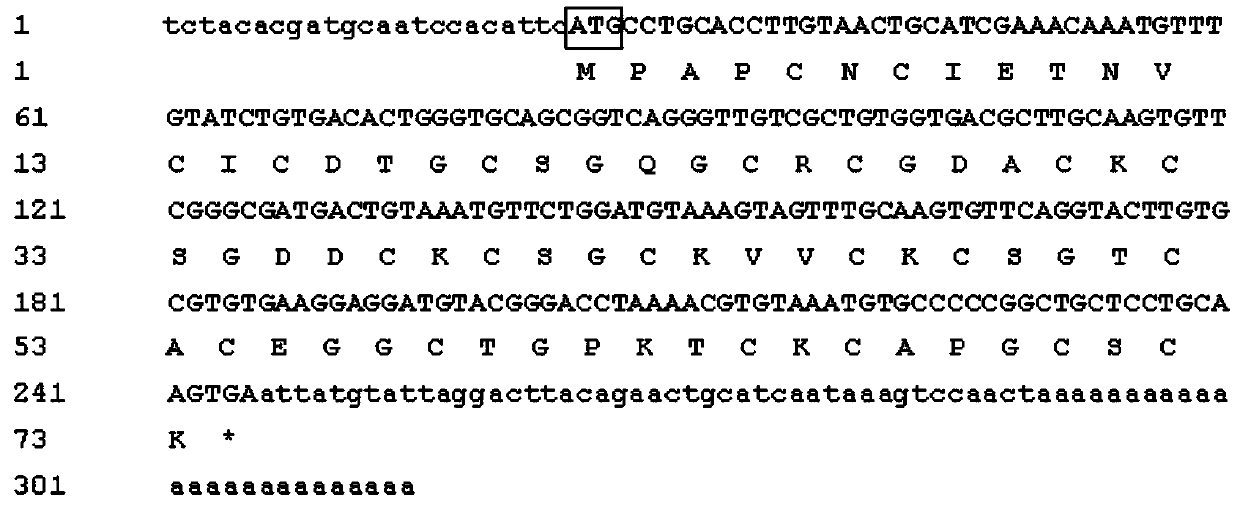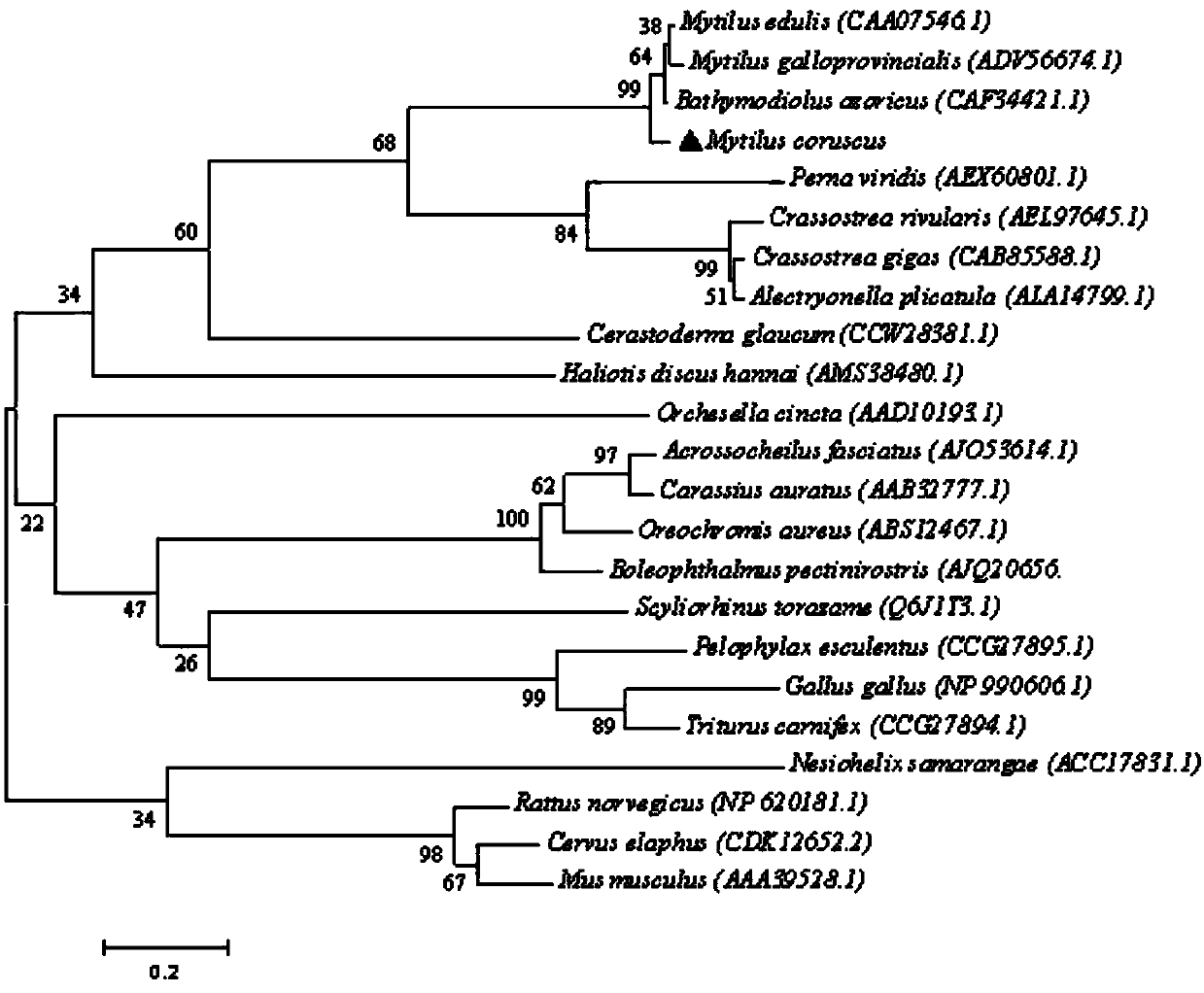Application of thick shell mussel metallothionein gene in ocean heavy metal pollution monitoring
A metallothionein, thick-shelled mussel technology, applied in the field of biological sciences, can solve the problems of sea area destruction, seawater quality, deterioration of environmental conditions, pollution, etc., and achieve a highly specific effect
- Summary
- Abstract
- Description
- Claims
- Application Information
AI Technical Summary
Problems solved by technology
Method used
Image
Examples
Embodiment 1
[0036] The metallothionein gene of thick shell mussel is obtained by using gene cloning technology, the nucleotide sequence of the gene is SEQ ID NO.7, and the full length of the sequence is 314bp. Metallothionein MT is a low-molecular-weight, cysteine-rich, thermostable, inducible non-enzymatic protein that is ubiquitous in organisms. It can stably regulate intracellular metal levels and participate in the regulation of essential metal elements in organisms. and detoxification of non-essential metals.
[0037] Above-mentioned gene cloning comprises the steps:
[0038] 1) Extraction of total RNA:
[0039] a) Take a clean 1.5ml centrifuge tube (RNAase free), add 500μl Trizol (4°C) with an RNAase-free pipette tip, use DEPC-treated tweezers to pick up about 30mg of liver tissue sample and immerse it in Trizol, and use an electric homogenizer to homogenize 30s, add 500μl Trizol;
[0040] b) Gently shake the centrifuge tube to fully dissolve the tissue into Trizol, and let stand...
Embodiment 2
[0085] The metallothionein gene of thick shell mussel was obtained by gene cloning technology, and the further optimization scheme is as follows:
[0086] Total RNA was extracted using Trizol Regent, guanidine phosphate and thiourea. Trizol Regent contained 0.03% guanidine phosphate and 0.01% thiourea. Trizol Regent, guanidine phosphate, and thiourea can play a beneficial role. On the one hand, they can quickly penetrate into tissues, inactivate endogenous RNases, do not cause RNA degradation, facilitate the subsequent extraction of RNA, and have strong cleavage ability. Lying cells and tissue samples in a short period of time can rapidly denature the proteins released by the cells and inhibit the RNase activity released by the cells, effectively inhibiting the degradation of RNA in the sample and maintaining the integrity of the RNA; on the other hand, assisting in the denaturation of proteins Dissolve the substances such as chloroform in the subsequent addition, so that the ...
Embodiment 3
[0088] Tissue-specific expression analysis of MT gene in Mussel sclerosus
[0089] The specific steps are:
[0090] 1) Total RNA extraction from different tissues:
[0091]Randomly select 3 thick-shelled mussels, extract their liver, mantle, serum, adductor muscle, gills, and gonads, and extract RNA to prepare for tissue-specific experiments on thick-shelled mussels. According to the Trizol of TaKaLa Company The method recommended by the Total RNA extraction kit was carried out. The obtained total RNA was detected by electrophoresis on a 1.5% non-deformed agarose gel, and its concentration and A260 / A280 value were detected by a UV spectrophotometer (Bio-Rad, USA);
[0092] 2) cDNA template synthesis
[0093] M-MLV (RNAase H - ) Reverse transcription kit, reverse-transcribe the total RNA collected from each tissue into cDNA, reverse 3 copies at a time, store it in a -80°C ultra-low temperature refrigerator after completion, and then use the NANODROP 2000 nucleic acid protein...
PUM
| Property | Measurement | Unit |
|---|---|---|
| Molecular weight | aaaaa | aaaaa |
Abstract
Description
Claims
Application Information
 Login to View More
Login to View More - R&D
- Intellectual Property
- Life Sciences
- Materials
- Tech Scout
- Unparalleled Data Quality
- Higher Quality Content
- 60% Fewer Hallucinations
Browse by: Latest US Patents, China's latest patents, Technical Efficacy Thesaurus, Application Domain, Technology Topic, Popular Technical Reports.
© 2025 PatSnap. All rights reserved.Legal|Privacy policy|Modern Slavery Act Transparency Statement|Sitemap|About US| Contact US: help@patsnap.com



